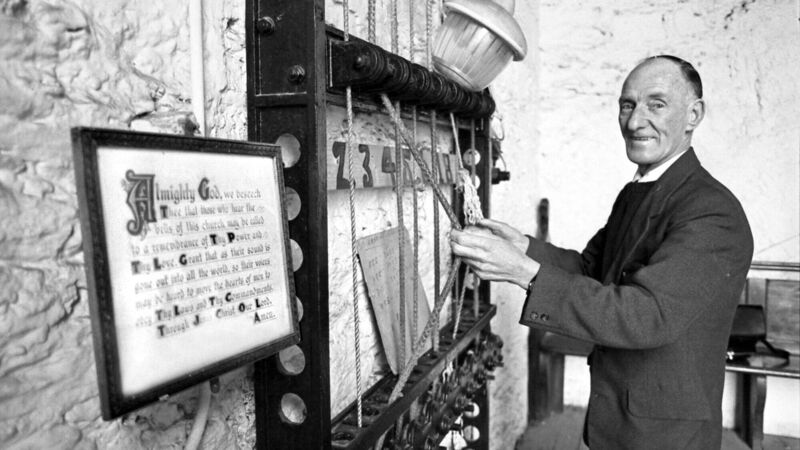Celebrating 269 years of Cork's iconic Shandon Bells

Alec Manning, bell ringer at Shandon, pictured in 1977.
It was a special day in Cork's history on Tuesday as December 7 marked 269 years since Shandon Bells rang for the first time.
Whilst the iconic bells have been quiet since the onset of Covid, people can still climb the 132 steps of Cork's most quintessential landmark to see the spectacular 360-degree views of the city.
St Anne's is the oldest church in continuous use in the city centre and has been a site of worship since before medieval times.

It was built in 1722 as a chapel of ease to the former St Mary’s Church Shandon, which was originally situated on the site but was destroyed in the Seige of Cork in 1690.
The tower, visible from many parts of the city, features red sandstone to the north and east and white ashlar limestone to the south and west and it is believed that the colours of the tower gave rise to the sporting colours of Cork.
The tower was actually raised in height in 1750 to accommodate the eight bells.

According to the official Shandon Bells website, the McOstrich family were involved in the creation of the tower and whenever a member of their family marries, the bells are rung in their honour.
The bells were cast by Abel Rudhall of Gloucester in 1750, and have been recast twice since in 1869 in 1908.
They first rang out at the wedding of Henry Harding and Catherine Dornan on December 7, 1752.
Original inscriptions are still visible on the bells including the lines:
‘When us you ring we’ll sweetly sing’
‘Since generosity has opened our mouths our tongues shall sing aloud its praise’.

The bells are rung on a fixed bells system known as an 'Ellacombe'.
An Ellacombe apparatus is a device that enables one person to ring all the bells of a church.
It is believed that Revd Ellacombe devised the mechanism so that all the bells could be rung by one trusted person without involving a band of unruly and perhaps drunken ringers.
In total, the iconic bells weigh in at a staggering six tonnes.
The historic tower also features its signature fish-shaped weather vane.

Covered in gold leaf and known locally as 'de goldie fish', the weather vane is in part a nod to the salmon fishing industry, which was very important to Cork.
The clock, which pre-dates Big Ben, was put in place by Cork Corporation in 1847 and nicknamed 'the four-faced liar' by astute locals who noticed that the four clocks were not always in agreement of the exact time.
On November 14, 1952, The Echo carried a story about an event to celebrate the 200th anniversary of Shandon Bells.

To mark the historic occasion, the then Curate-in-Charge, the Rev J. W. T. Tuckey arranged a special service to be held.
"The service was arranged in the form of a Gift Day Service to supplement the recently inaugurated appeal for funds for the repair of the tower and bells and the opportunity was also taken of inviting the newly-elected Lord Bishop of the Diocese, the Right Rev Dr George Otto Simms to attend and to dedicate other gifts recently given to the church," the article stated.
Prior to the opening of the service, a special recital of well-known hymns was given on the bells.







 App?
App?





